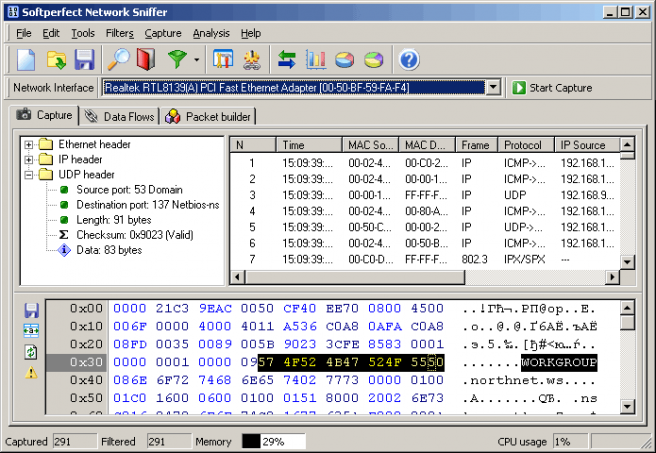
Wireless network monitoring is an effective system put in place which involves distributed sniffers that capture the transmitted data of wireless users, facilitating status analysis, fault diagnosis and resource management of the network system. With the increasing scale and extended applications of Internet of Things (IoT), there is a growing demand for reliability, stability and security within the network. However, there remain a few areas pertaining to wireless network that require attention, such as network congestion, low communication reliability and security. Wireless network has emancipated people from the bondage of wired network and enhanced the quality of human life.


This paper focuses on the basics of packet sniffer its working principle and various packets sniffing tools and their working capabilities for network troubleshooting and analysis.

They are used for network troubleshooting, analysis, congestion control, and monitoring activities. This paper will consider the primary and most useful wireless packet sniffers like Wireshark, Tcpdump, Colasoft Capsa, Etherape etc. It monitors network activity in real time, provides dynamic network statistics and chart, captures network traffic for detailed analysis, probes the network with active tools to simulate traffic, and most importantly, a powerful packet generator in order to analyze network status and resolve troubleshoot. It is also known as Network or Protocol Analyzer or Ethernet Sniffer. It is a piece of software or hardware that monitors all network traffic.

Some packet sniffers used by network engineers are single-purpose dedicated hardware solutions while other packet sniffers are software applications that run on standard consumer-grade computers, utilizing the network hardware provided on the host computer to perform packet capture and injection tasks. Packet sniffers come in a couple of different forms. Packet sniffers are tools that are commonly used by network engineers to diagnose network-related problems.


 0 kommentar(er)
0 kommentar(er)
